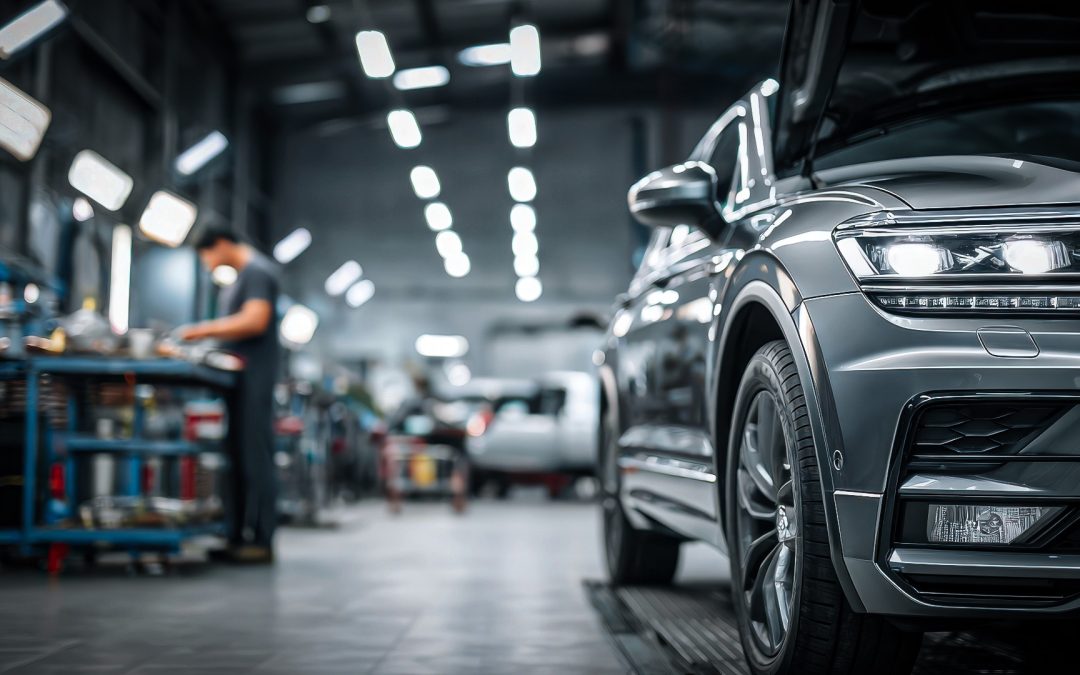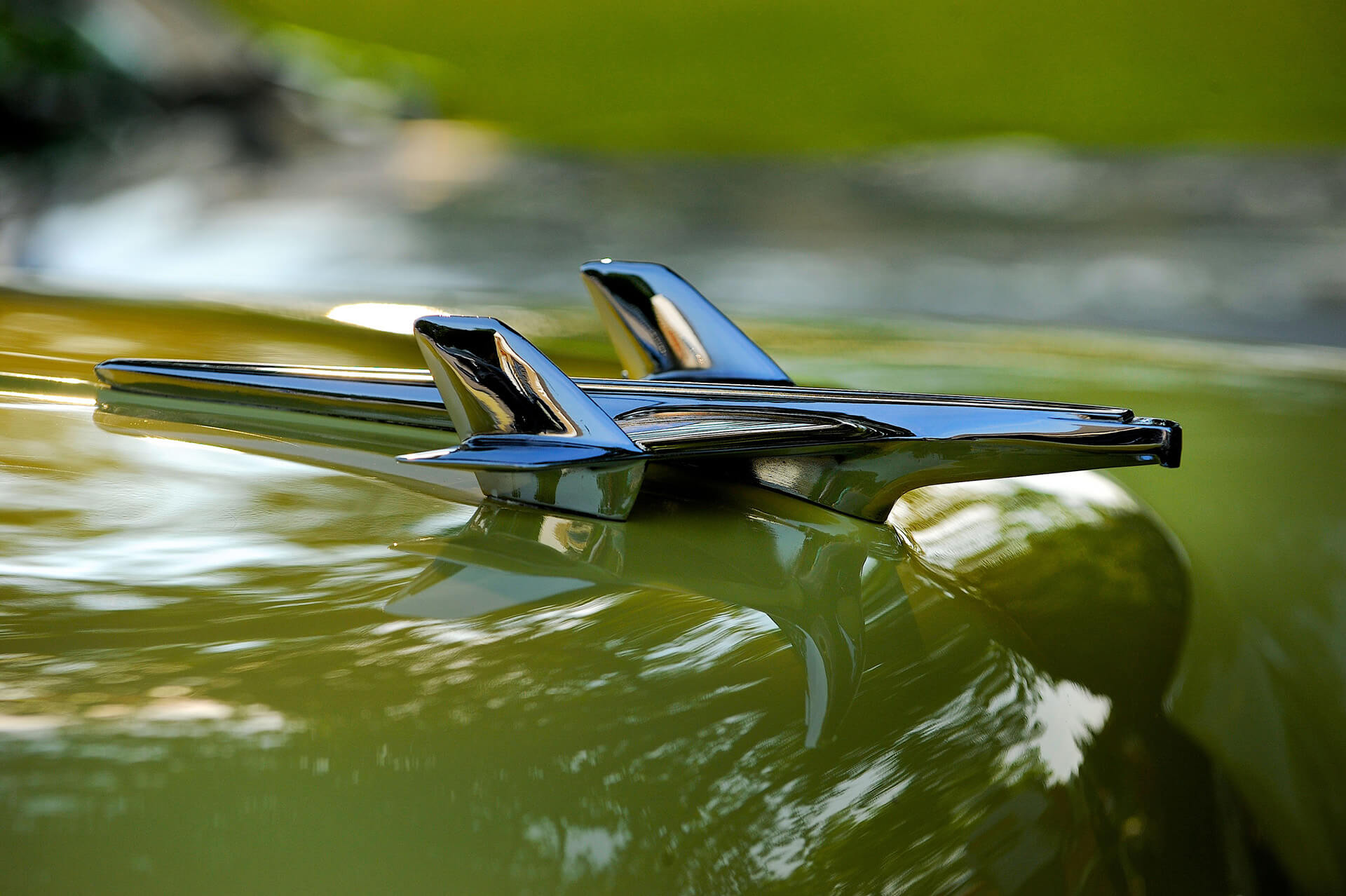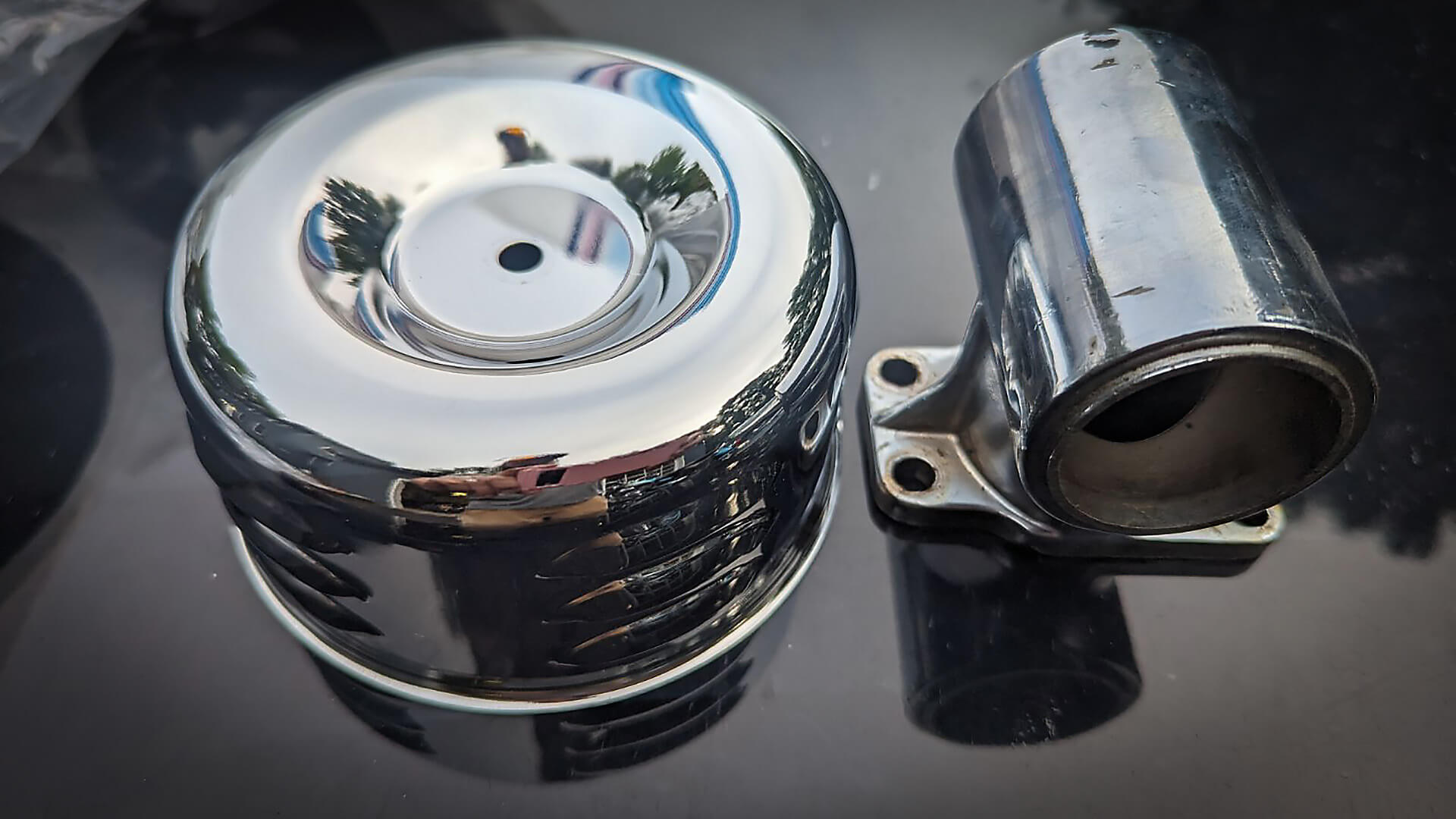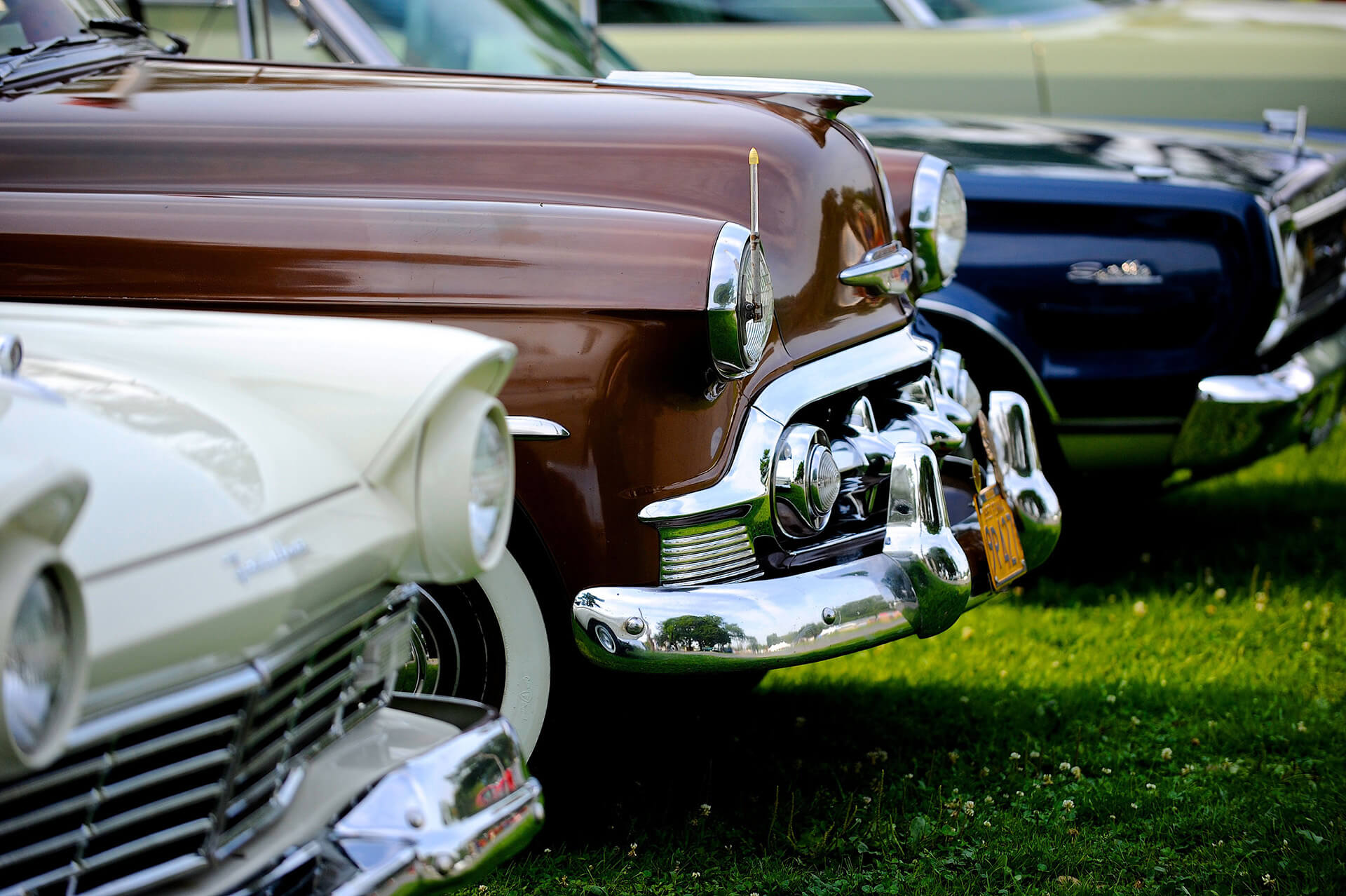Using your shop’s Cost of Doing Business (CODB) as a baseline for labor rates.

My Shop Press colleague Lemmy and I have had an ongoing debate about chrome. Since I’m a lover of antique cars, particularly Tri-Five Chevys, you can guess that I’m a pretty big fan of chrome. I think it makes any car look luxurious and stylish.
Lemmy, on the other hand, vehemently disagrees. He says maintaining chrome is hell because it’s time-consuming, and I suppose that’s a reasonable criticism. Regardless, this debate got me thinking about why chrome was used so much on antique cars, but not so much anymore. I also spoke with a few techs of different experience levels to get their takes.

Chrome hood ornament. Photo: Mike Apice.
While I do love chrome, it has more than a few disadvantages. Chrome plating is more expensive than other plating processes, especially nickel. Lemmy has plenty of arguments against the use of chrome, and while he hasn’t swayed me, a few of his points are worth mentioning. It’s difficult to prep for chrome since the steel must have a mirror finish and have no oxidation, which makes it expensive if this part of the job is farmed out.
Chrome is almost impossible to remove, so much so that new parts are often easier to deal with than re-chroming a previously chromed part. A small break in a chrome finish is enough to allow corrosion in and wreck the whole job.
Because of how chrome goes on, it thins out at the edges and corners, exactly the places that take the heaviest abuse from well-meaning polish fanatics. While chrome is incredibly tough and durable in some ways, in others it is fragile and delicate and thus easily damaged. Jason Douglas, former Auto Body Technician/Painter at a local restoration and custom shop, agreed: “While durable, if it does get scratched or chipped, it’s not something you can polish out like you can on stainless. Stainless trim can generally be repaired if it gets dented or scratched.”
As a consumer, it’s often difficult to tell what kind a of a chrome job you just got. It might look great, but you really don’t know about the longevity until quite a while down the line. In addition, because of the commonly used phrase “polishing the chrome,” people don’t treat chrome like paint or a similarly delicate item. Owners tend to use chrome polish, without realizing polish contains abrasives. Abrade long enough, and there goes the chrome.
Furthermore, there is a misconception (primarily among old-timers) that steel wool should be used on chrome. The problem is that steel wool also abrades it. Brass wool from a boat supply shop should be used, as brass is softer on the Mohs scale (a mineral hardness scale, characterizing scratch resistance of minerals) than chrome.
Additionally, hexavalent chromium plating, one of the chrome plating processes, uses chromium trioxide as the main ingredient, which is a very toxic compound. While less-environmentally-damaging forms of chrome plating have been developed, none of this is what you could call “earth friendly.” Chrome can also add weight to a car, which can impact fuel economy and performance.

Chrome parts. Photo: Lemmy.
Chrome plating, the process of electroplating a thin layer of chromium onto a metal object, started on cars in the 1920s and also began to be used on tools like ratchets at the same time. Before that, nickel electroplating was used on cars. The purpose of adding either plating to the metal used in cars was to increase durability, especially for parts that are exposed to the elements, such as bumpers, grilles, and wheels, as well as the aesthetic benefits of a beautiful mirror-like shine.
The two finishes have slightly different appearances, though. Nickel has a yellow tinge to it that chrome does not. Chrome was preferred since it didn’t have that yellow cast to it, but these days, there are some who appreciate a nice nickel job because it’s very traditional and it’s the “correct” finish for a certain period.
It should also be noted that there is a difference between hard chrome and decorative chrome plating, or “show” chrome. The difference is the thickness of the chrome plating on the final product. Hard chrome plating is thicker and preferred for its durability, resistance to wear and corrosion, and other advantageous qualities. It is more of an industrial finish, and you’ll find it on hydraulic cylinders, piston rings, and shock shafts.
Decorative chrome plating serves primarily as a protective covering and for aesthetic appeal. It is found on bumpers, trim, rocker panels, door handles, and grills. These components’ corrosion resistance is increased by the attractive chrome coating. Decorative chrome plating is also simple to clean with common household cleaners and chemicals due to its resistance to corrosion. Due to the smooth surface’s resistance to dirt and dust accumulation, decorative chrome-plated products can maintain their luster over time.
Gallery: Nothing is better than chrome on a classic car. Photos: Mike Apice.
Due to the expense and the crackdown on chrome plating for environmental reasons, automakers have used acrylics, urethane, polyurethane, aluminum, carbon fiber, and plastic chrome plating in more recent years in lieu of decorative chrome plating. Acrylics give a consistent finish to cars, but they initially weren’t as glossy as chrome. When Ford began employing acrylic stoving enamels, which gave the durable finish additional gloss, the situation changed. Urethane and polyurethane paints provide vehicles with durable and very glossy finishes.
Polished aluminum is one alternative. It’s not applied to a part like chrome; instead, the part is made from aluminum and then polished. It offers a reduced weight to chrome, has somewhat of a milkier look than chrome, and can be locally polished, often without special tools or chemicals. It is more vulnerable to corrosion (due to aluminum’s extremely high affinity for oxygen, it oxidizes more quickly than steel). Carbon fiber is lightweight and usually stronger than aluminum, but is costly. Plastic chrome plating provides nearly the durability and gloss of traditional chrome, however not every plastic can withstand the chrome plating process. It should also be noted that this is a separate process developed to bring a chrome finish to parts that cannot undergo the temperatures of regular chrome.
As automakers started using different plating methods, the car buying public also began to accept different finishes other than chrome. As cars got (mostly) smaller and sportier, that heavy chrome didn’t make much sense. Consumer tastes drive this transition, too, as chrome has gone in and out of style with changing trends. Just as car consumers no longer preferred large tailfins, red interiors, long coaches, and brasswork, so too did their penchant for chrome change.
For example, Keith Davenport, an auto technician at Dorman, said “I like chrome only on classic cars. It doesn’t look good on modern cars, because of the shapes of modern cars and they don’t really have the provisions for chrome molding.” Also, in my opinion, chrome plating on cars really only works on the 1940s to early 1960s era of big, heavy vehicles with large tailfins.
That said, the appearance of chrome still clearly holds an appeal to contemporary car buyers, as chrome-look plastic parts and thin-plated metal parts are still in use. These modern finishes may be nowhere near as durable as the old-school stuff, but we still desire that gleaming, striking look. Of course, these have their disadvantages. As Matt Petty said, “New chrome is kinda lame because it’s that stick-on crap that when it cracks, and it will, it turns into an awesome chrome razor blade. We have had people slice their fingers on Dodge interior door handles where the fake chrome has peeled.” And, as far as the real old-school stuff, authentic chrome is still rather popular for custom big rigs.

Chrome is a classic addition found on any antique car show. Photo: Mike Apice.
While I understand the reasons why automakers largely moved away from chrome, I still love the shiny, bold look of it and think it’s a shame that future generations may not get to appreciate it the way we can. That’s why I dream of buying a Tri-Five and keeping it in mint condition so that I’m sure my daughter can see a chromed-out car in all its glory. And that’s exactly what my wife needed to hear to greenlight a ‘57 I’ve got my eye on. If you see me, make sure you’ve got your shades on, because you’ll be able to see that chrome shine from space!
The articles and other content contained on this site may contain links to third party websites. By clicking them, you consent to Dorman’s Website Use Agreement.
Participation in this forum is subject to Dorman’s Website Terms & Conditions. Please read our Comment Policy before commenting.